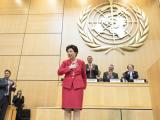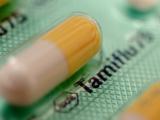May 18, 2009
Japan reports spike in novel H1N1 cases
Health officials voiced concern over a surge in novel H1N1 influenza cases in Japan, particularly among young people, Agence France-Presse (AFP) reported today. Case numbers rose from 4 to 129 over the weekend, leading to more than 2,000 school closures. Many of the new cases are reported from Kobe and Osaka, where officials believe the virus spread during a high school volleyball tournament. Community spread in a region outside of North America could trigger a rise in the world's pandemic alert level.
Global cases rise, six countries report first cases
The global number of novel H1N1 cases pushed to 8,829 in 40 countries, the World Health Organization (WHO) reported today. The count includes 3,103 cases and 68 deaths in Mexico, 4,714 cases and 4 deaths in the United States (as of May 15), 496 cases and 1 death in Canada, and 9 cases and 1 death in Costa Rica. Countries reporting their first cases over the past few days include Ecuador, Peru, India, Malaysia, Turkey, and Australia.
New York death boosts US fatalities to 6
An assistant principal at a New York City school shuttered by with a high rate of novel H1N1 infections died last night, raising the number of US deaths from the disease to six, the New York Daily News reported today. The 55-year-old man died 6 days after he became ill. His family said his only underlying condition was gout. The man reportedly received an experimental modality using ultraviolet rays to decrease pathogens in the blood. Other outlets reported he was also treated with ribivirin.
[May 18 Daily News report]
US cases pass 5,000
The number of US confirmed and probable novel H1N1 cases grew to 5,123, of which 5 were fatal, from 48 states and the District of Columbia, the US Centers for Disease Control and Prevention (CDC) reported today. The total includes the first reported cases from Mississippi. The only states with no confirmed cases are Alaska, West Virginia, and Wyoming. Yesterday's death of a New York man from the new virus is not yet included in the CDC's total.
[Current CDC numbers]
CDC reports unusual trends involving young patients
At today's CDC press briefing, Anne Schuchat, MD, from the science and public health program, said some unusual patterns are emerging with the novel H1N1 virus in young people. Officials have already noted that the new virus has disproportionately affected younger people, she said. However, she specified that hospitalizations are primarily occurring in those 5 to 24 years old. Also, Schuchat said the number of school closures this late in the season in diverse parts of the country is also unusual.
[May 18 CDC briefing transcript]
Virus-like particles show promise for use in flu vaccines
Virus-like particles—noninfectious viral "shells"—produce a robust immune response against flu and could be used in a vaccine, Ted Ross, PhD of the University of Pittsburgh's Center for Vaccine Research said today at the American Society for Microbiology's general meeting. Ross and colleagues have used VLPs made from H5N1 avian flu and the reconstituted 1918 pandemic flu virus in early clinical trials. The particles can be produced faster than traditional vaccines, Ross said in an interview.
No evidence of a second novel H1N1 strain
In response to a reporter's question at a CDC press briefing on May 15, a CDC official said the agency was investigating reports that another novel H1N1 virus had been identified in Mexico. Later that evening, Nancy Cox, MD, head of the CDC's influenza division, told Science Insider blog that the report was rumored and may be a misinterpretation of lab data by someone without lab training. Mexican lab officials told the blog there was no evidence of a second novel H1N1 virus, though seasonal strains were predominant in some parts of the country.
[May 15 Science Insider blog post]



















